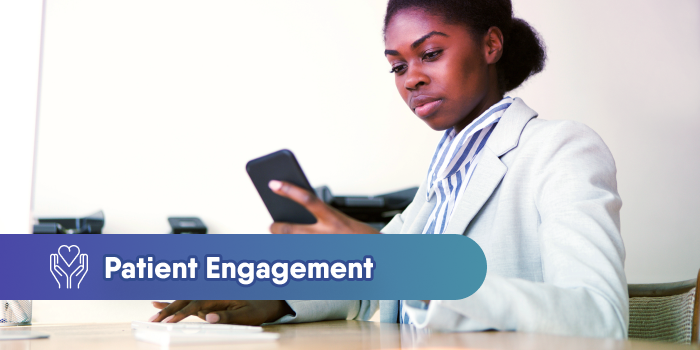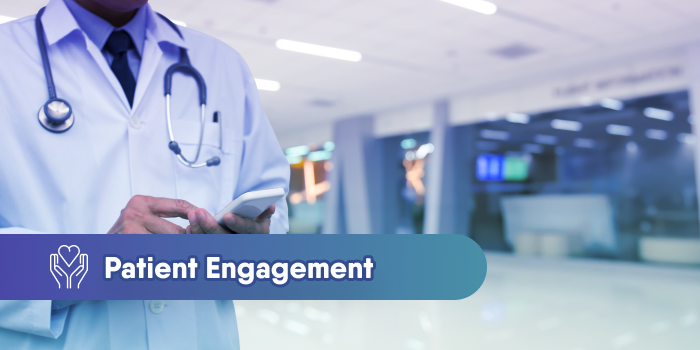Text Messaging Improves Patient Satisfaction and Practice Revenue
In a demanding and competitive industry, businesses like your medical practice must consistently balance tasks to improve patient satisfaction while...

According to a report, 94% of physicians are smartphone users. In addition to making phone calls and using apps, physicians and other medical staff use their phones to take advantage of today’s most convenient digital communication health tool: text messaging.
Texting has become one of the most popular forms of communication among all generations, not just the younger demographics. In the United States, 97% of Americans own a cellphone, while 85% are smartphone users.
Healthcare providers prefer text messaging as it is a fast, efficient, and reliable way to communicate with consumers. Choosing to communicate with your patients via texting allows you to quickly and directly relay vital information to enhance patient satisfaction.
The simplicity and widespread use of 2-way texting in the healthcare industry post several benefits to achieve significant improvements in your operations.
Here are five essential reasons on how your practice can immediately benefit from using text messaging:
The FICO Global Survey says that four out of five people prefer text messaging to communicate with healthcare providers.
Unlike any other communication channels that require patients to log in to their computers, 2-way texting allows sending and receiving of messages from any location to another mobile device. It gives patients the freedom to exchange a conversation with their healthcare providers while doing other tasks.
With text messaging, patients can book a quick appointment while, for instance, waiting to pick up the kids after school or eating lunch. Additionally, texting is a great way to inform your patients of additional medical proceedings or other transactions outside the clinical setup.
Simply put, patients opt to communicate with their physicians via texting because it doesn’t require them to answer a call, write down a message, or listen to anything. Providing the patients communications methods they prefer in healthcare improves quality and access to care while nurturing an active doctor-patient relationship.
Part of a person’s daily routine is checking their phone and texting. Text messaging is a communication channel most Americans are familiar with and comfortable using.
According to Forbes, people read 95% of text messages within three minutes of being sent, and healthcare providers take advantage of this statistic to communicate efficiently with healthcare consumers.
Integrating 2-way texting into your practice provides your patients with further relevant information about their medical conditions or treatments before or after their appointments. Texting your patients also allows you to answer their questions instantly.
It is important to note that more than 97% of smartphones today have access to the internet. Physicians send text messages with a link containing vital information to educate their patients on relevant resources regarding their healthcare status or condition. Links on an online article, video, or website can be attached to a text message. Once the receiver clicks on the link, they will be redirected immediately to the outside source.
With the rise of digital transformation, patients will likely read and engage a document sent to them via text message or email rather than reading them in print.
The use of text messaging outside a hospital or clinic appointment proves that you are committed to maintaining connections and support to your patients in their medical proceedings, which will subsequently strengthen patient-provider communications and health management.
Due to its crucial role in day-to-day tasks, most people never let their cellphones out of their sight for very long. In the US, the average adult checks their phone 47 times per day. Additionally, 82% of people say they open every text message they receive, while 90 seconds is the average response time to a text.
Based on the mentioned figures, healthcare providers use texting to implement effortless tracking to ensure patients’ compliance with their medication or healthcare protocols. For example, prescription reminders encourage patients to pick up their medication and take it as directed.
Healthcare providers remind their consumers to adhere to the prescribed medication or treatment to monitor their patients’ healthcare progress. Consider sending the following text messages:
Make sure to tell your patients to reply to your appointment reminder texts as a confirmation that they receive them. If there is no reply from the patient’s side, medical staff can reach out and re-engage with them.
Aside from doctor-patient communication, texting allows healthcare consumers to connect to their physician’s clinic for faster transactions such as appointment booking.
With 2-way texting, healthcare providers can notify their patients about their scheduled appointments. At the same time, patients know in advance if they will make it to their scheduled appointment or if they will reschedule or cancel, which can drastically reduce the number of no-shows.
By reminding your patients about their appointments, you give them the option to reschedule. As a result, you may be able to fill the empty slots with other available patients.
For medical practices that require annual visits, texting is an essential way to recall patients and remind them about additional services available for their healthcare.
Healthcare providers also use text messaging to send polite reminders about bill current and overdue payments.
Medical practices also use texting to issue patient satisfaction surveys, offer promotions, and send health tips or reminders for preventative care.
However, while there are clear advantages to allowing text messaging in healthcare, it is not without risks. Quick and simple as it is, 2-way texting is also the easiest way for healthcare providers like you to violate privacy laws regarding exchanging sensitive health information in an unsecured communication channel.
Make sure you integrate into your practice the use of HIPAA-compliant text messaging platforms. These platforms are closed-protected systems with full end-to-end encryption allowing only authorized individuals to send and receive messages.
Moreover, to conduct the safest texting practices possible, stay mindful about the information you share. Avoid including protected health information (PHI) in your text messages whenever possible. Text messages without mentioning PHI are acceptable under HIPAA texting guidelines.

In a demanding and competitive industry, businesses like your medical practice must consistently balance tasks to improve patient satisfaction while...

Patients prefer receiving and sending text messages with their healthcare providers because it is more efficient and provides greater accessibility....

One of the main reasons patients miss their appointments is they simply forget. That is why appointment reminders are essential. Reminders not only...